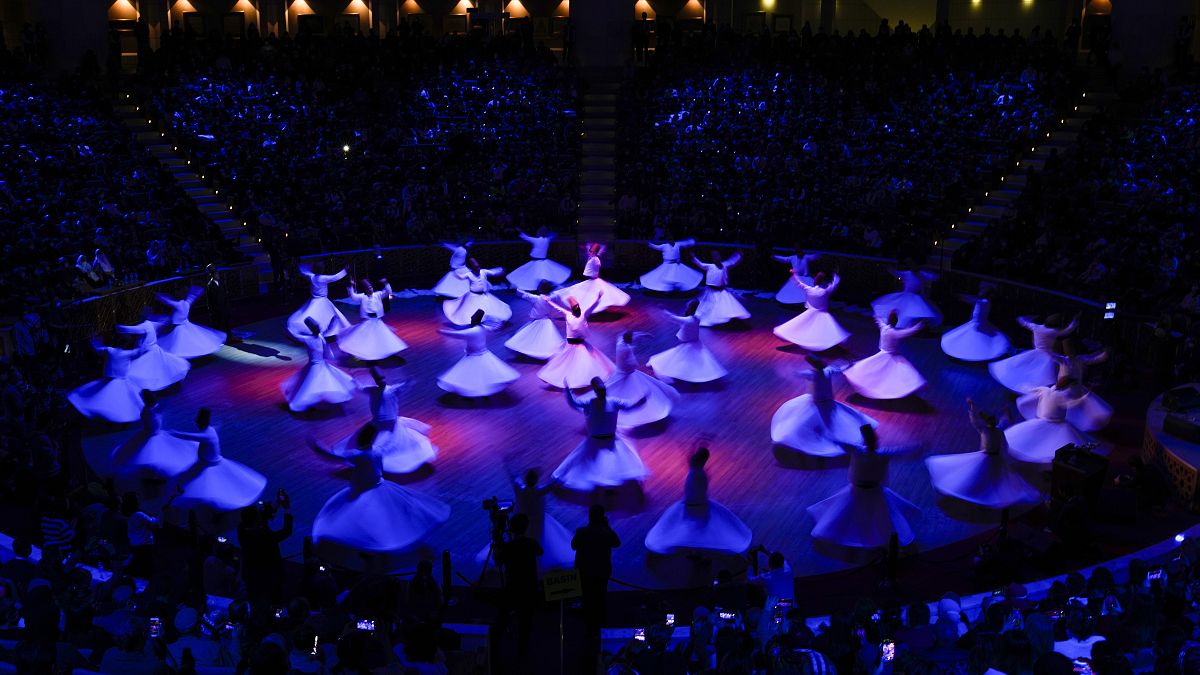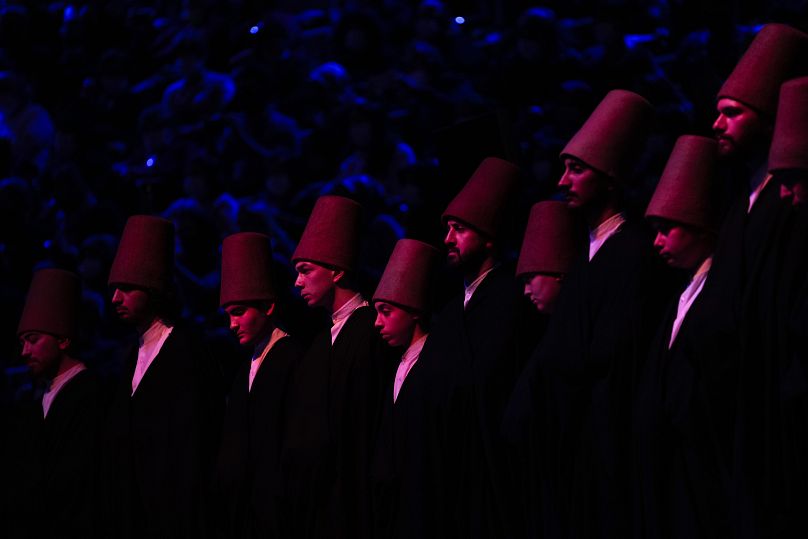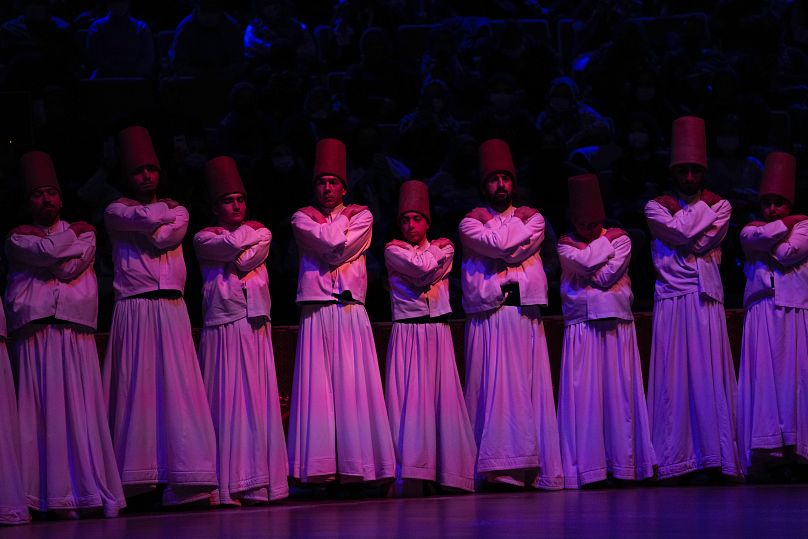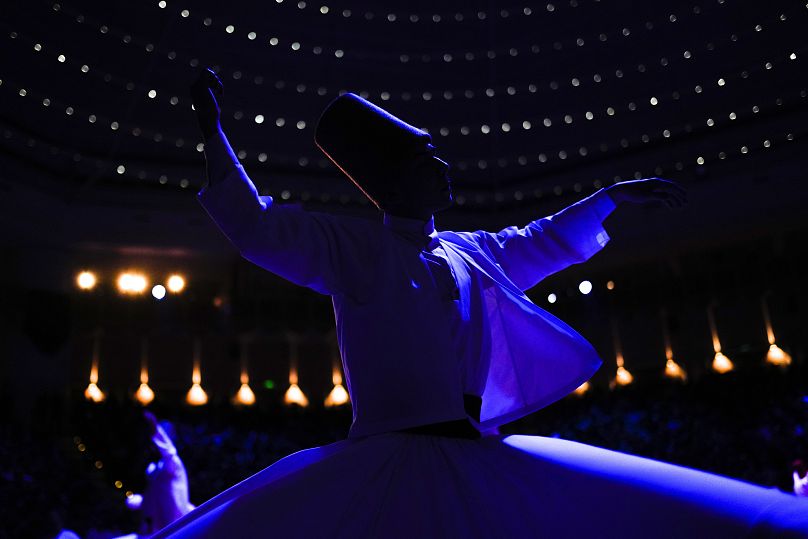This centuries-old tradition has survived many iterations of the Turkish state and celebrates the 'union with God' of Sufi mystic Jalaladdin Rumi.
Each year, thousands of people travel to the Turkish city of Konya to attend a weeklong series of events and ceremonies that mark the death of the 13th-century Islamic poet, scholar and Sufi mystic Jalaladdin Rumi.
Instead of mourning his death, however, the ceremonies celebrate what his followers believe is his union with God.
The main feature of the "Sheb-i Arus" or "night of the union," is an enchanting ritual performed by the dervishes of the Mevlevi order — more commonly known as the whirling dervishes.
What happens in the whirling Dervish ceremony?
The rite begins with a recital of prayers and verses from the Quran. The dervishes, dressed in long white robes symbolising shrouds, black cloaks symbolising tombs and long headgear symbolising tombstones, then rise from the ground to salute each other.
Leaving their cloaks on the ground, they take their places around the circular floor and begin to spin to reach a trance-like state that they believe unites them with God. The ritual is performed to the sound of chanting and music from a reed flute and other instruments.
As they whirl, the dervishes' right hands are symbolically turned upward toward God, while their left hands are turned downward to Earth.
The ceremony ends as it started, with the recital of prayers.
'Heritage of humanity' says UNESCO
Rumi, who is known as Mevlana in Turkey, was born in Balkh — which is now in Afghanistan — in 1207, but settled in Konya, where he died on Dec. 17, 1273. His son, Sultan Veled, established the Mevlevi order of the mystical form of Islam, Sufism, after his death.
Although religious orders were banned in Turkey in the early 1920s with the establishment of the secular republic, the dervishes' rituals were regarded as a cultural heritage and the order was largely tolerated. There are now many Sufi dervish orders around the world, including in the United States. Women have been allowed to join some lodges, although an overwhelming number of dervishes are men.
In 2005, the United Nations' cultural body, UNESCO, proclaimed the dervishes' ritual a masterpiece of "the oral and intangible heritage of humanity."
The structure holding Rumi's tomb in Konya is now a museum as well as a pilgrimage site.
This year, visitors were able to return to the ceremonies honouring Rumi, after the coronavirus pandemic forced last year's commemorations to be held without spectators.
One visitor from the United States, Rupert Flowers, told the state-run Anadolu Agency that he travelled to Konya, inspired by Rumi's best-known and welcoming quatrain:
"Come, come again, whatever you are,
"If you repent a thousand times,
"Even if you break your repentance a thousand times, come again
"Our door is not a door of despair.
"Come, come again whatever you are."






